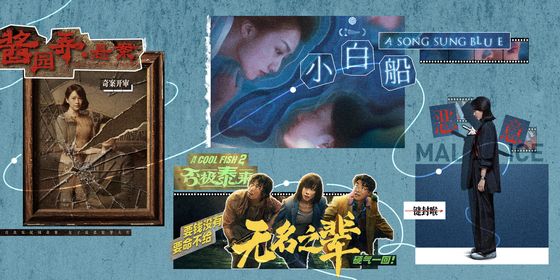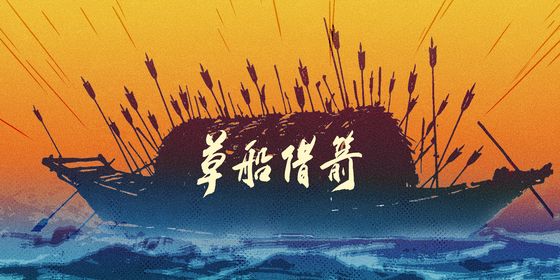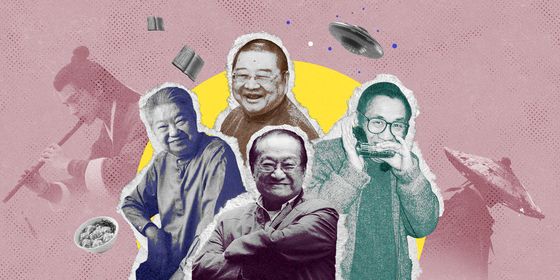How the ancient tradition of spring outings evolved into this year’s social media fad
This year is dubbed China’s “first year of the picnic,” following an outdoor eating fad in the spring fueled by the long coronavirus-imposed confinement as well as online businesses and celebrities. In April, the topic “urban picnic planning” garnered 19 million views and over 40,000 comments on the e-commerce app Xiaohongshu. As of April 29, there were over 130,000 picnic-themed posts on the platform.
Chinese writer Eileen Chang once observed in her essay collection “Notes on a Trip to the Countryside” (《异乡记》), based on her 1946 travels between Shanghai and Wenzhou, that “Chinese people’s travels are like some sort of picnicking; eating regional specialties at each stop along the way…” This year’s fad of the picnic or 野餐 (yěcān), however, is less to do with the “outdoors (野 yě)” or “meals (餐 cān),” but rather about sharing jealousy-inducing photos on social media.
Posts on Xiaohongshu, WeChat moments, or other platforms, often feature similar “props,” such as a gingham picnic mat, a rattan basket, shiny baked goods and fruits, champagne glasses (with whatever beverage), and a copy of an English language newspaper. According to popular guides online on how to create the perfect social media-ready “celebrity-style” or “Instagram-style” photos, red-and-white or yellow-and-white picnic mats and various berries are preferable, and the basket goes better with a bouquet of flowers and colorful balloons than with food.
Although the modern picnic is believed to be a concept originating in Europe in the 1700s, China’s version of such excursions, commonly known as “spring outings (春游 chūnyóu)” or “stepping on the green (踏青 tàqīng),” can be traced back to at least the Wei and Jin dynasties (220 – 420), when people went on excursions or held banquets by the water to celebrate the Shangsi Festival (上巳节) on the third day of the third lunar month. Scholars would drink and compose poems by streams, as depicted in the masterpiece “Preface to the Poems Composed at the Orchid Pavilion” (《兰亭集序》) by the literatus Wang Xizhi of the Eastern Jin dynasty (317 – 420).
The activity became more common, among women as well, in the Tang dynasty (618 – 907). According to Tang poet Du Fu, “On the fresh third day of the third lunar month, rivers in Chang’an are lined by beauties.” Bai Juyi, another Tang poet, even claimed, “If spring comes and one does not go out for fun, I’m afraid one is a fool.”
A special picnic for women, often daughters of officials and rich families, emerged. As recorded in the book “A History of the Tang Under Emperor Xuanzong’s Reign” (《开元天宝遗事》), groups of ladies would compete on the value and beauty of the flowers they wore, and then erect curtained areas with their skirts and bamboo poles to enjoy food and drinks, normally between the two spring solar terms 立春 (“The Beginning of Spring”) and 雨水 (“Rain Water”).
In the Song dynasty (960 – 1279), the Qingming Festival or Tomb Sweeping Festival incorporated traditions of the Shangsi Festival and the Cold Food Festival, in which cold food was eaten. At that time, people had a seven-day holiday for the festival, and would not only pay respect to the dead, but also enjoy scenery, food, and drinks on spring excursions.
“The field looks like a busy street: Under fragrant trees and gardens, among spreads of glasses and dishes, people toast and urge each other to have more,” described Meng Yuanlao, a government official, about the bustling scene of a spring outing in his memoir about the capital of the Northern Song dynasty (960 – 1127) Dreams of Splendor of the Eastern Capital (《东京梦华录》).
In the Ming and Qing dynasties, activities grew more diversified—kite-flying was a particular favourite—and even more elaborate methods of food preparation emerged. According to Qing scholar Shen Fu’s autobiography Six Records of a Floating Life (《浮生六记》), his wife Yunniang hired a wonton stall owner to travel with them, who prepared dishes on site during one of their spring outings.
Memories of this kind of outing, known as 野炊 (yěchuī, “outdoor cooking”), are shared by many “post-80s” and “post-90s” Chinese, especially in rural China. In their school years, they were organized to prepare meals and cook for themselves to build character and learn valuable life lessons.
In the 1920s, the spring outing was included as an extracurricular activity for students. A 1950s essay “Happy Spring Outing” promoted it as a means of the “liveliest patriotic education…for children to learn about the greatness and loveliness of the country.” The school activity, however, has been controversial in the last decade, as more cities have forbidden it over concerns for students’ safety.
Now with the surging popularity of the activity, many have complained online of another problem: there’s no free grassland left to picnic on.
Cover image from Unsplash












